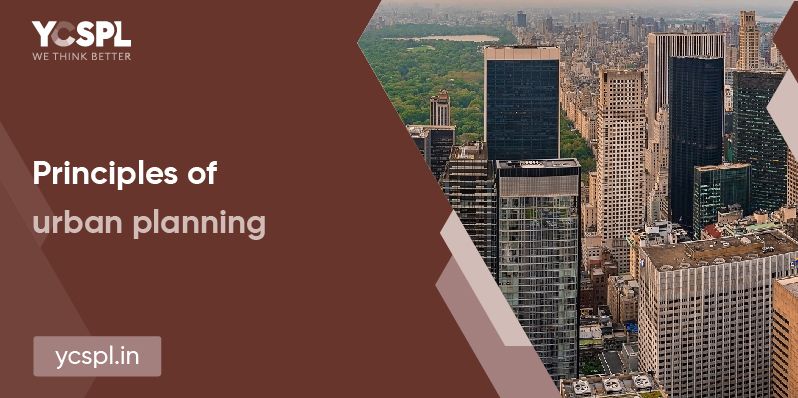
Urban planning enhances the look, feel, and living experience of any city. And this happens when the considerations go beyond just infrastructural developments. The core focus should be revolving around a whole lot of other considerations like self-sustainability, creating local neighborhoods, bridging economic inequalities, and efficient management of resources. The principles of urban planning should foundationally focus on making the cities futuristic and accessible with a lot of opportunities everywhere.
Engineering, surveying, mobility planning, and architecture should all be combined effectively for arriving at proper urban blueprints. Before going into the principles, let’s look at a few objectives of urban planning before getting there.
There should always be a people-first consideration in practice that enable efficient living conditions everywhere across the cityscape. Zoning a city into residential, institutional, recreational, commercial, and industrial areas. This will avoid encroachment between the zones and thus conflict an orderly development or smooth functioning.
Cities should always attract a lot of migration because of the ample opportunities they provide and also for the living experience they deliver. Any infrastructural development should pay added attention to the cultural history of the existing area before revitalization. This will enhance the existing structures while also retaining the essence of what the city stands for.
Everything from the aesthetic finish of the buildings, the distinction of civic bodies from the other buildings, adding a touch of greenery wherever permissible, preservation of trees, and preventing complete exploitation of any natural bodies should all be given careful thought while going about urban planning services.
Cities should retain the essence of cultural roots that have been long-standing in the locality. This will make each city distinguished from one another. This will also improve the aesthetic sense with a unique appeal. At the same time, citizens are most likely to spend most of their days in the rush hours and do not spend as much time outdoors. They’ll lose their sense of connection with nature and the environment with time. This will decrease their overall harmony of life and living.
It is thus important that urban planning authorities should rely key focus on building public spaces and outdoor setups where people can take a breath and relax with natural outlets.
A 15-minute city should be one of the primary objectives during development. This is basically where a citizen can find anything they want and all the essentials they’re looking for within a 15-minute walking or cycling distance within. This will create a sustainable city-dwelling life and reduce the need for long-distance transportation. These local neighborhoods will also bridge any economic inequalities between the two regions within the city. Public amenities, recreational centers, and outlets for socializing should all be accessible to every last citizen of the city structure.
Only when a city’s landscape is dissection into different zones, there will be room for comprehensive development while also not being at a cost to one another. There should be separate areas dedicated to industries, commercial structures, residential facilities, etc. This will make each area independent in its function and also not disrupt the harmony between two localities or neighborhoods.
Even if cities are only known for their high-rise buildings and constant buzz, it is necessary that you preserve any greenways there are in the nearby regions. Segregating green zones will help us prevent mass exploitation of land and commercialization of structures that needs preservation. Any lakes, ponds, reserved forests, river beds, or other regions should be excluded from any development plans. There should also be proper conservation plans in place to revitalize existing natural structures before they’re exploited beyond repair.
Roadways especially in cities are going to face the issues of congestion and endless traffic if they’re not planned right. The hierarchy of the road structure has a direct effect on the aesthetic appeal of the cities.

Hindrances like an irregulated road full of traffic issues or potholes are going to ruin the living experience of people and make commuting a real problem.
There are going to be a lot of working professionals who’d be commuting from one place to another on a day-to-day basis. They should have a lot of options and a hassle-free journey experience. This will improve their perception of city life and also makes it easy for them to navigate their day-to-day life. Infrastructural development proposed by any urban planning company should focus on the efficient integration of public and private transportation networks to make commuting across the city easier.
Focussing on progressive development and inclusivity should be the core principle of urban planning. This will make sure that the city is free from any division in terms of gender, race, or physical abilities. A simple example would be to plan to have wheelchair accessibility in all the public gathering areas or gender-neutral bathrooms for people on the spectrum.
Social and communal outlets should be given importance during infrastructural development. Promoting communal harmony among the citizens will only be possible if there’s a possibility for them to interact with each other.
At YCSPL, our urban planners carry years of experience and they’ve been working closely with the governmental organization to carry out effective development strategies.
Change becomes the most dynamic, powerful source of progress you have

